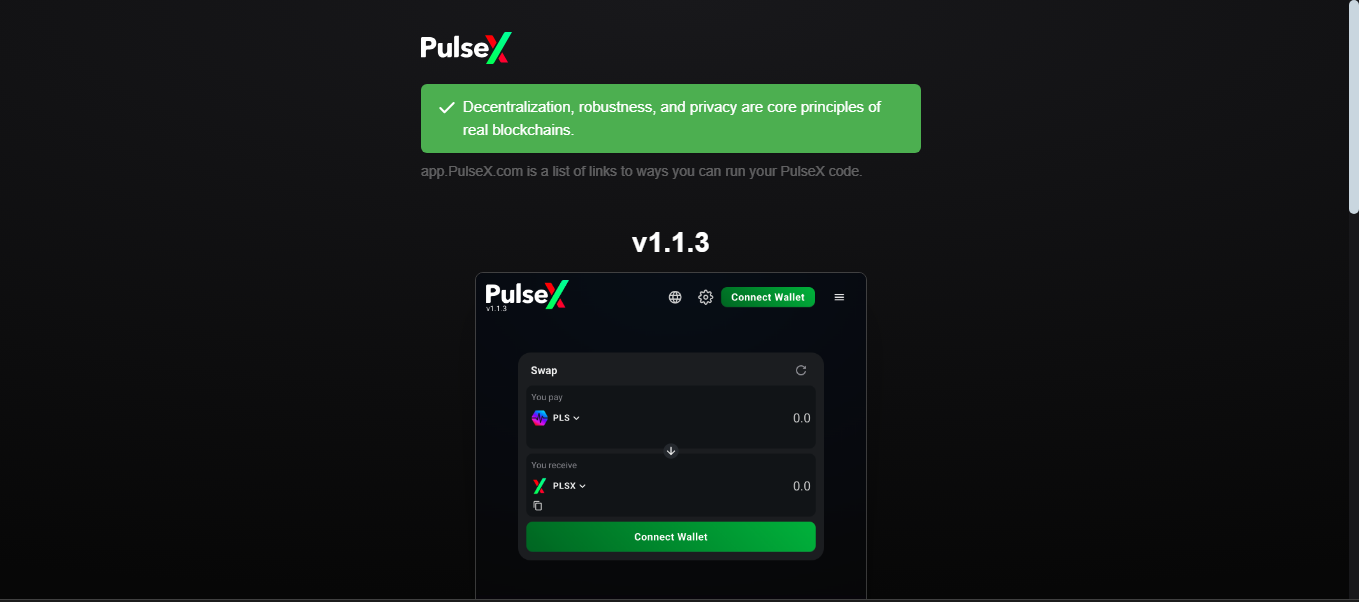PulseX V2 - Exchange Review

PulseX V2 is the core decentralized exchange on PulseChain, aiming to rival the top AMMs by combining deep liquidity, fast execution and unique tokenomics. At its center is the PLSX token, which benefits from aggressive burn mechanics with every swap. The volume is real, the numbers are big - but the risks aren't small either.
Core Mechanics
This isn’t a fork with minor tweaks. PulseX V2 brings Uniswap-style functionality with a few extras: concentrated liquidity pools, automated fee distribution, and PLSX deflation through trade-based burning.
Every time a user swaps tokens, a small portion of fees is used to buy and burn PLSX. This shrinking supply design creates upside pressure for holders while also rewarding liquidity providers with standard AMM returns. Combined with PulseChain’s low fees and block time, the result is high-frequency trading with fast settlements.
Liquidity and Volume
PulseX V2 processes between $6 million and $16 million in daily volume, depending on market cycles. Cumulative trading since launch exceeds $5 billion. At peak periods, it rivals many established DEXes on larger chains.
Total value locked on the platform ranges between $90 million and $230 million. Liquidity pools are fairly deep, especially for core pairs like PLSX-PLS, HEX-PLS and stablecoin routes. Traders moving size will find less slippage here than on other PulseChain DEXes.
Revenue and Token Flow
The DEX generates around $28,000 per day in trading fees. These are split between liquidity providers and the protocol. Roughly 6 percent of each swap’s fee is used to buy back and destroy PLSX tokens.
Yearly, PulseX brings in close to $9 million in total fees, with a significant portion being burned or redistributed. For LPs, this means real yield potential. For holders, it means a decreasing token supply over time.
Benefits of the Platform
- Fast execution thanks to PulseChain’s low-latency architecture
- High trading volume and liquidity for core assets
- Strong tokenomics with built-in deflation via PLSX burns
- Fee structure rewards both holders and liquidity providers
- Expanding pair listings - now over 40,000 pairs and growing
Tradeoffs and Limitations
- No formal audits at time of writing - smart contract risk remains high
- PulseChain is new, and long-term network stability is not guaranteed
- Regulatory status of both the chain and exchange is unclear
- Ecosystem is dominated by a few players - decentralization is questionable
- No fiat on-ramps, bridges, or cross-chain trading integrations
Who Should Use It
PulseX V2 isn’t for everyone. It’s best suited for:
- Experienced DeFi users comfortable navigating new ecosystems
- LPs who understand concentrated liquidity and want yield with upside
- Traders already active in PulseChain or holding PLS-based assets
- Builders and token launch projects looking for native liquidity options
It’s not ideal for casual traders, fiat users, or those seeking long audit trails and compliance reports.
Platform Snapshot
Final Verdict
PulseX V2 is fast, aggressive, and built for action. If you’re deep into PulseChain, it’s probably your go-to. If you’re exploring yield in high-volume environments and can tolerate some risk, there’s upside here.
Disclaimer
“This content is for informational purposes only and does not constitute financial advice. Please do your own research before investing.”
.png)







%203.svg)
%203.svg)




















